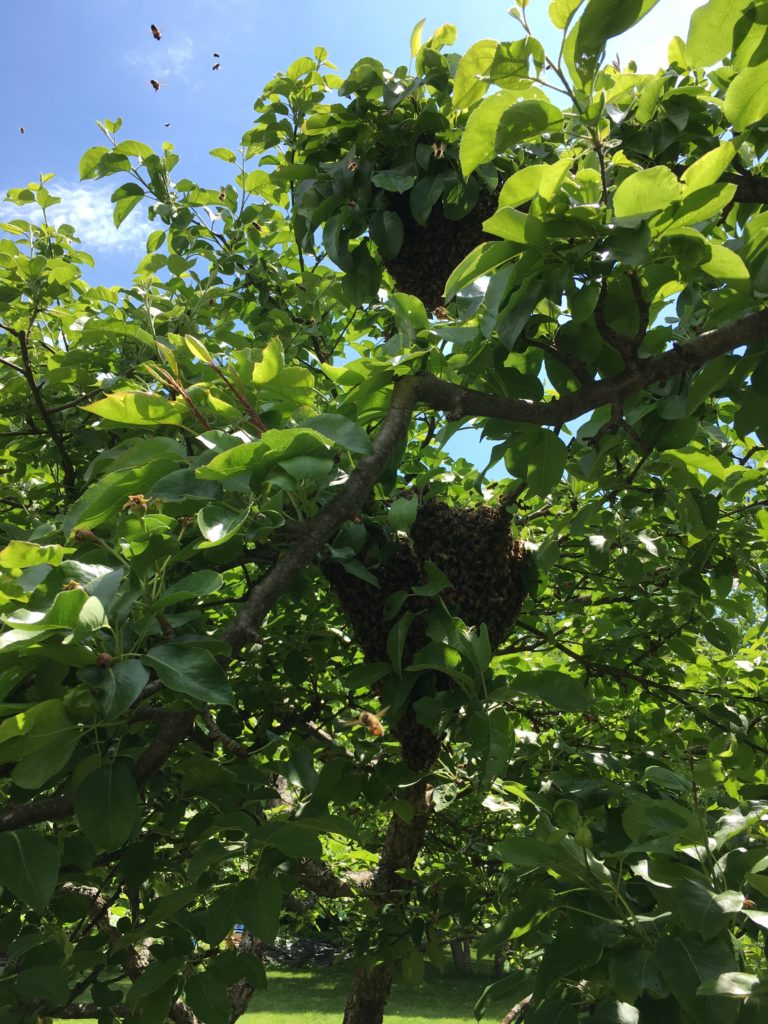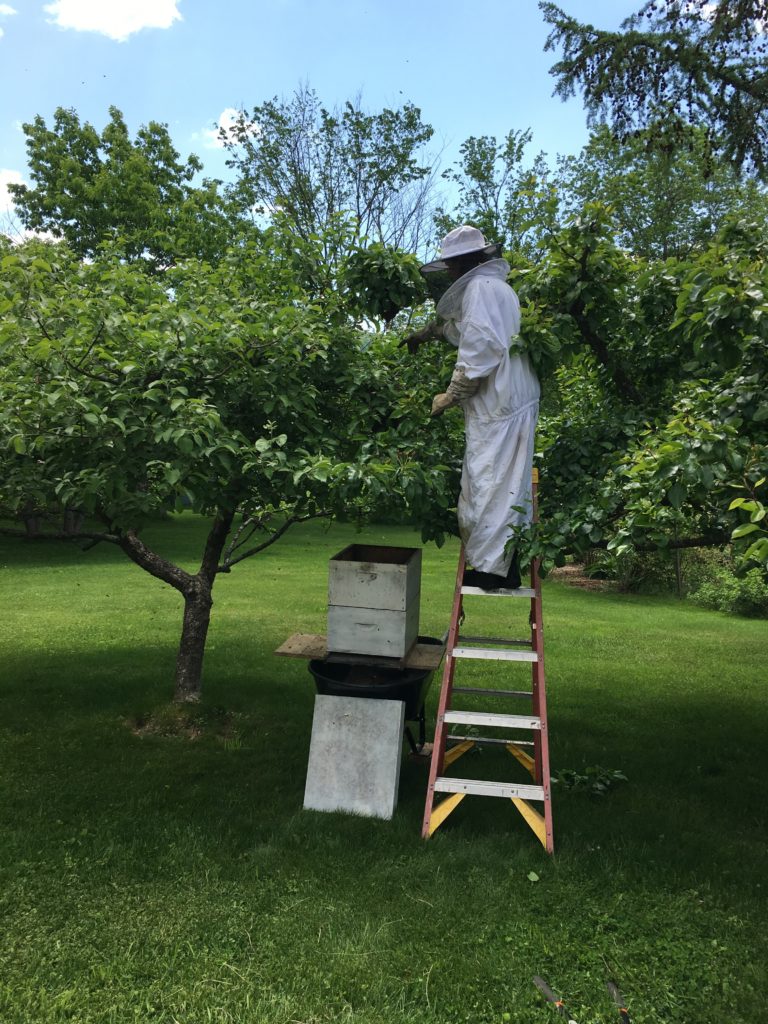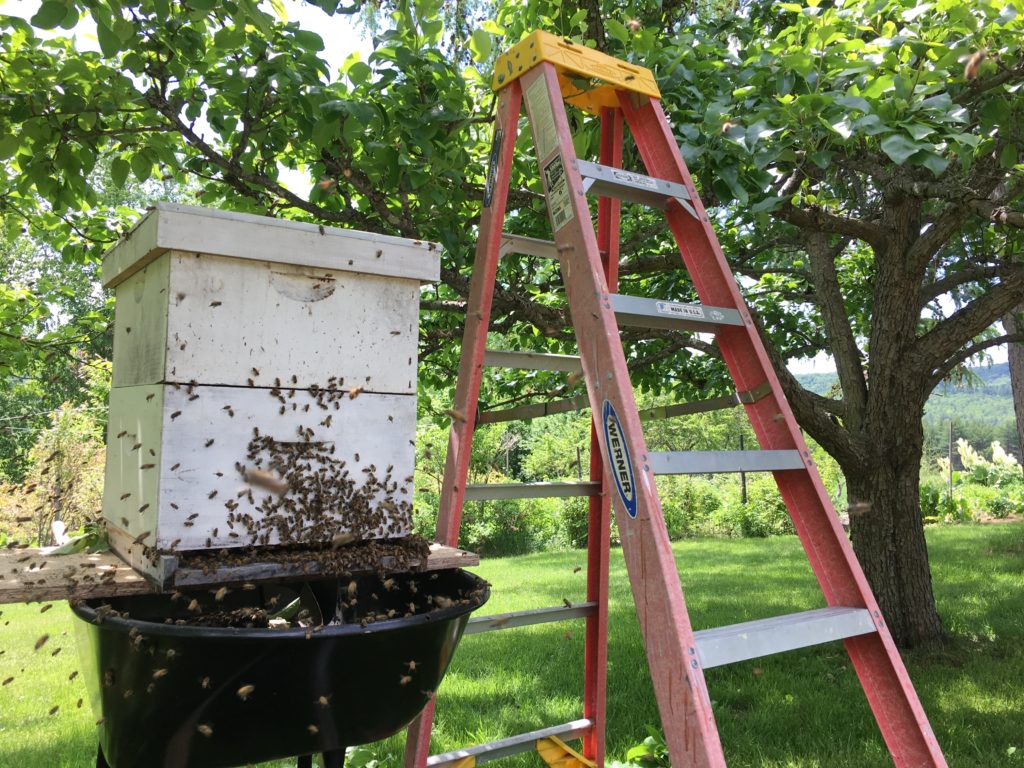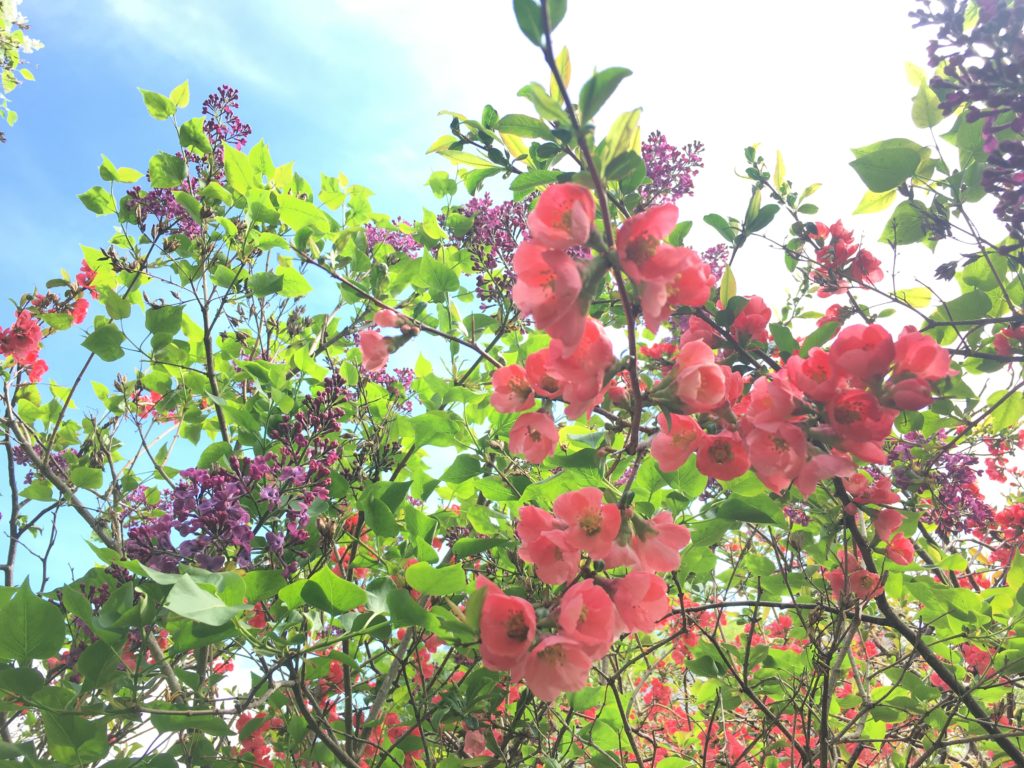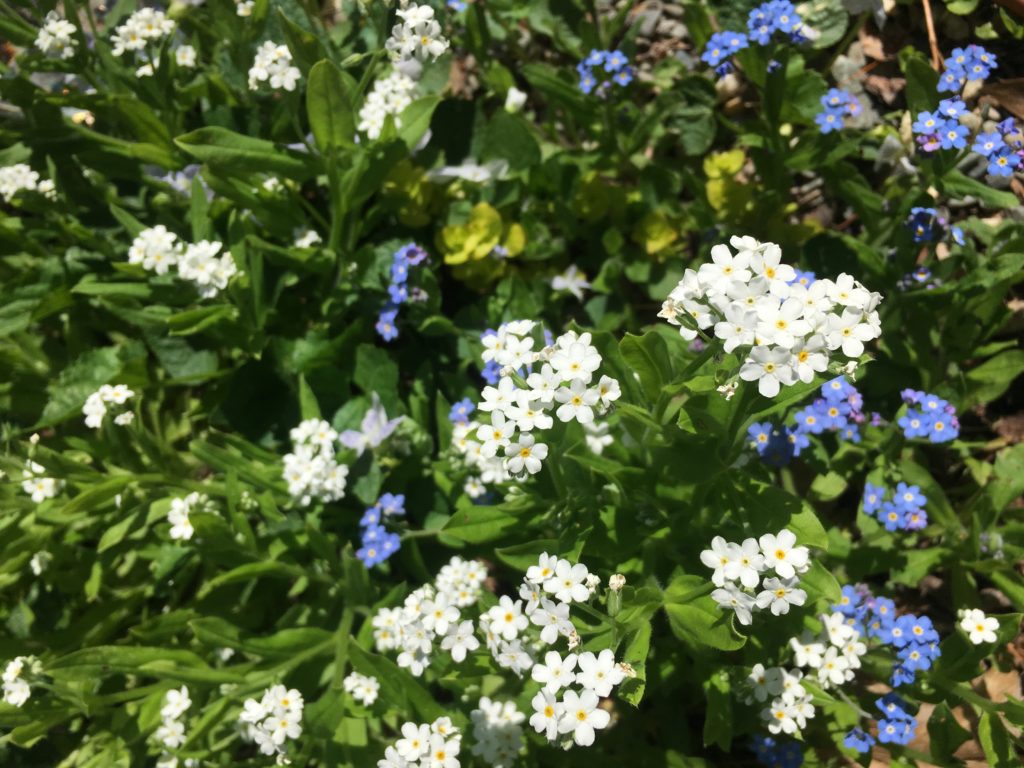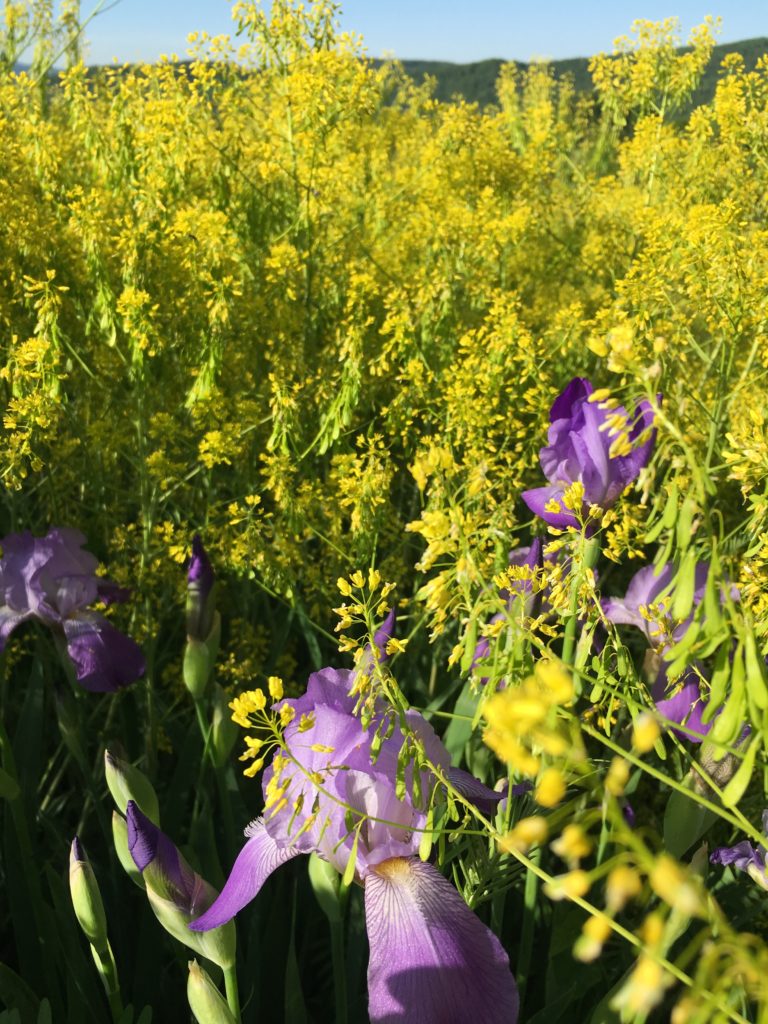We’ve been privileged to share the farm with Honeybees since the 1980’s. Over the decades, I’ve tried to learn as much as I can about these amazing creatures. Early on, a bee shaman from the Andes came and heightened my feelings about the significance of Honeybees. Everything he said has reverberated in me down through the years. Among other things, he warned of the bee crisis that would occur in America.
I also have read many books about Honeybees. Some have been helpful and some very strange. Beekeepers of the last century, at least the ones putting pen to paper, seemed to have been mostly men, and many of them had some very peculiar ideas about the almost entirely female composition of bee colonies. In the gardens here, I have greeted every Honeybee I’ve encountered as an opportunity to thank a treasured friend. Mostly, I have spent countless hours sitting with the beehives watching the Honeybees come and go. All this to say, I deeply love Honeybees. Yet after all this time, they remain an immense and glorious mystery to me.
This last week was a prime example of this. We noticed Honeybees were bearding on the outside of a couple hives. Bearding is when a lot of Honeybees come out of their hive and sit on the outside of the hive boxes. Sometimes a beard will almost cover the front of the hive. They will do this during hot days to cool off, but it has been cold here this spring ( in fact, it was 39 degrees last night). They also beard when they feel crowded in the hive and need more hive boxes. We put more hive boxes on the hives with the beards and crossed our fingers. Why? Because Honeybees will sometimes swarm and leave a hive even when it is spacious. They divide themselves and a swarm departs to create a new colony for mysterious reasons or mysterious to me.
Swarms are one way to increase our Honeybee community but not a reliable one. This is because we cannot always encourage a swarm to move into one of our hive boxes. If the swarm lands high in a tree, we cannot even reach the swarm to give this a try.
When a swarm leaves the hive, it is quite a moment. Tens of thousands of Honeybees take flight and all of them hum and fly in circles interweaving with one another. The new queen is always somewhere in the whirling mass of bees doing what some (male) beekeepers like to call the “flight of the virgin queen.” This new queen will eventually settle somewhere temporarily, and all the other bees following her will cluster around her to protect her. Then the swarm will send off some scouting bees to find a new home for the new colony. This means the swarm will stay in this temporary location until the scout bees find the perfect home. This temporary situation can last a couple of hours or a couple of days before the scout bees find somewhere they think will work for a new hive location.
This time of waiting when the swarm is in this temporary location is our chance to get the swarm into one of our hive boxes and settle the colony here at the farm. I have tried to chase a swarm when it goes to its permanent home, and let me tell you, they move so fast there is no following them. The temporary in transit moment is our only chance to hive a swarm here and must be done as soon as possible in case the scout bees find a new home quickly.
Yesterday I was weeding the Red Shiso babies when I heard the enormous humming noise that indicated a swarm had left the original hive and was on the go. As I settled near the old hive box to see where the swarm would first settle, in air space at least 50 feet wide the Honeybees were all moving in a swirl of what appears to be random circling but is a much more choreographed dance. Somewhere in there was the new queen on the first leg of her journey to a new home.
I asked the Deva of Honeybees and the Elementals of the Honeybees in this swarm to land the swarm low to the ground so we could reach it, but only IF the swarm wanted to stay at the farm. I felt like the swarm did want to stay here, and their choice of temporary location seemed to underscore this.
This time the swarm chose an apple branch about 8 feet off the ground. This was a pretty good placement for us to get a hive box under the swarm and gently shake it into the hive to see if we could get the queen settled into new quarters provided by us.
So began several efforts to house this swarm. With the first try, the swarm didn’t settle in after the first bee drop. We think this was because the queen didn’t go into the box with the first drop. The swarm was a long icicle of bees but also one spread out on the tree and one group of the swarm fell outside the box when they dropped.
The mood of the swarm was restless, and that feeling was also in play. The swarm regrouped in an odd place underneath the lip of a wheelbarrow, and we tried again. With the second try we were confident the queen was in the hive box, because the Honeybees outside the hive box were interested in entering the box to join her. The second time, in a few minutes, the rest of the hive of many thousands of Honeybees had joined her in the hive. By dusk we had a new hive next to the new hive from last week’s swarm.
Yes, we had another swarm last week! For us, swarms usually happen later in the summer if they happen at all. We know of beekeepers who go into their hives and kill any incipient queens that the hive may be growing. I have never been one for interfering too much with what is going on inside the hive boxes. One summer we had a “bee expert” give us a lot of hands on advice and show us a lot of his tricks. I found his behavior around the hives very aggressive and macho. He was constantly in the hives moving frames and doing stuff he said would make the hive more productive. I was very relieved when our lessons with him were over, and we could leave the Honeybees in peace. Somehow I never could buy into his ideas that Honeybees were not productive enough in their own right. My goodness, they literally work themselves to death for the sake of the hive.
Anyways, it’s been a bit of surprise to have two swarms so early. At last week’s swarm I got some photos to share here. This swarm dropped into the new hive box seamlessly and settled in for good within an hour of the drop. All the staff goddesses watched the whole process which added to the feeling of harmony. Here are a few photos of this earlier swarm.
